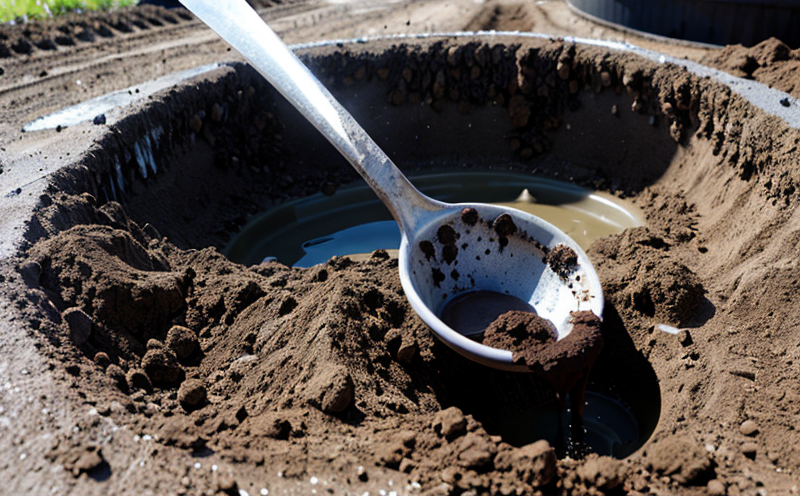EPA 6020 Metals by ICP MS in Sludge Test
The EPA Method 6020 is a widely recognized and comprehensive analytical procedure designed to determine trace metals in sludge samples. This method employs Inductively Coupled Plasma Mass Spectrometry (ICP-MS) for precise and reliable detection of various metallic elements present in the sample matrix.
Sludge and biosolids are byproducts of wastewater treatment processes, containing a complex mixture of organic and inorganic compounds. These materials are crucial for soil amendment and landfill applications but must be analyzed to ensure compliance with environmental regulations. EPA Method 6020 is essential for quality control, ensuring the safe reuse or disposal of these materials.
The methodology involves several critical steps that ensure accurate results. Initially, sludge samples undergo a digestion process using nitric acid to dissolve organic matter and release metals into solution. After digestion, the sample undergoes filtration to remove particulates. The digested slurry is then transferred to an ICP-MS instrument for analysis.
The ICP-MS equipment used in this procedure features robust capabilities, including a nebulizer that atomizes the sample into ions, which are subsequently detected by the mass spectrometer. This setup provides high sensitivity and selectivity, enabling precise quantification of metals down to parts per billion (ppb) levels.
Key elements targeted for analysis include cadmium (Cd), chromium (Cr), copper (Cu), lead (Pb), mercury (Hg), nickel (Ni), selenium (Se), silver (Ag), and zinc (Zn). Each element has specific detection limits, with the lower limits of quantification ranging from 0.1 to 1 ppb for most metals.
After analysis, results are reported in weight/volume percent or milligrams per kilogram (mg/kg) based on the sample's initial moisture content. Reporting includes detailed information about each detected metal, including its concentration and relevant action levels specified by EPA guidelines.
The accuracy of these measurements is crucial for decision-making processes related to biosolids management. Compliance with environmental regulations necessitates precise data, which this methodology provides through rigorous quality control measures, including blank runs, replicate analyses, and proficiency testing.
The use of ICP-MS in EPA Method 6020 ensures that trace metal content is accurately determined, facilitating informed decisions about the safe reuse or disposal of sludge. This method supports sustainable practices by ensuring that biosolids are suitable for agricultural applications without posing risks to human health and the environment.
Understanding the intricacies of this method helps stakeholders in the water and wastewater sector make well-informed choices regarding waste management strategies, thereby promoting environmental stewardship and compliance with regulatory standards.
Applied Standards
| Standard | Description |
|---|---|
| EPA Method 6020 | Detailed procedure for the determination of trace metals in sludge using ICP-MS. |
| ASTM D8351 | American Society for Testing and Materials standard for the preparation and analysis of biosolids. |
| ISO 17025:2017 | International Organization for Standardization certification for testing laboratories. |
| CODATA | Data reporting guidelines to ensure consistency in results presentation. |
Industry Applications
- EPA Method 6020 is critical for compliance with environmental regulations governing sludge and biosolids management.
- Safeguards the safe reuse of biosolids in agriculture or other applications by ensuring metal concentrations are within acceptable limits.
- Supports the waste management industry by providing accurate data on trace metals, enabling informed decisions about disposal methods.
- Aids in the development of sustainable practices for the treatment and utilization of wastewater sludge.
Why Choose This Test
The EPA 6020 Metals by ICP MS test is a cornerstone of environmental compliance and sustainability. Its precision, reliability, and robustness make it an indispensable tool for stakeholders in the water & wastewater sector.
- Regulatory Compliance: Ensures adherence to stringent EPA guidelines for sludge and biosolids management.
- Precision: Provides accurate metal concentration data down to parts per billion levels, crucial for decision-making processes.
- Rigorous Quality Control: Includes multiple quality assurance measures, such as blank runs, replicate analyses, and proficiency testing.
- Sustainability: Supports the safe reuse of biosolids in agriculture or other applications, promoting sustainable practices.
- Expertise: Leveraging our team's expertise ensures that results are not only accurate but also actionable for stakeholders.
- Cost-Effective: By providing precise data upfront, the test helps avoid costly remediation efforts and legal penalties.
The combination of these factors makes EPA Method 6020 an essential service for quality managers, compliance officers, R&D engineers, and procurement professionals in the water & wastewater sector.





